BY DAVE McGLYNN AND FRANK RICCI
When the economy gets tough, the need for firefighting and rescue services grows. Unfortunately, this usually does not lead to an increase in our budgets. With the rising inflation rates in the United States, the cost of living has gone up—a situation that has had an adverse impact on our fire departments. Training divisions also suffer when chiefs forget that contact hours cannot be traded for projects they want to get off their desks by utilizing the training division to do everything from procurement to handing out personal protective equipment.
- Realistic Training with Limited Resources
- Enhancing Fireground Effectiveness Amid Staffing Challenges
- Officer Development Programs on a Budget
Impact of Poor Training
No fire department is immune to budget cuts or poor leadership; both have led to ineffective training. Training is dependent on funding because of the resources needed to ensure safe, efficient, and effective practical training such as training props, materials, and instructors’ compensation. As a result, reducing these funds means firefighter training suffers a massive quality reduction. This situation leads to severe ramifications; however, with proper networking, attitude, and ingenuity, we can overcome many of these budget issues.
Perishing of Skills
Firefighters do not rise to meet expectations. They fall to their level of training and physical ability. Almost all skills are perishable. They’re built on constant drilling in a nonpunitive, constructive way designed to increase member buy-in.
Firefighters need mission-focused and frequent training to maintain their skills. They need to know training is the place to overcome. If you are setting up training with an expectation of failure, you are only failing yourself. Yes, we want to challenge the company to problem solve. But this is vastly different than setting up an impossible evolution and setting people up for failure.
Search Drills and Firefighter Survival Techniques
Skills are essential, especially in emergencies like structure fires. Without quality training, firefighters risk lacking these skills, putting communal safety at significant risk. For example, hands-on training is crucial in rescue operations because firefighters’ best tools are their hands and their brains. Their ability to be mechanically inclined is critical. They must be able to use their knowledge to execute the skills needed to overcome certain obstacles they’ll encounter when they attempt to locate and rescue a victim or, more importantly, perform a self-rescue in the event of becoming lost, disoriented, or trapped. If firefighters lack these hands-on skills, they leave themselves vulnerable to improper execution of the task and are subject to injury—or worse.
Often, we see training officers with grand plans set up a program destined to fail. When I (Ricci) was promoted to drillmaster for the New Haven (CT) Fire Department, I saw this in action. Throughout the day, companies would come to the training grounds for multiple live burns and with the basic guarantee that the entire department would not get through the training. And busy companies who were only one alarm away from getting to work at an actual fire would find themselves demoralized.
Even worse, I (Ricci) saw training get canceled based on the day’s roster, with instructors pointing out that several members had already done the training. This approach had to stop if we were going to increase our proficiency on the fireground. We came up with a new approach, which included the following elements:
- We instituted a program based on the company and the shift—not the roster.
- Instead of keeping companies all day, we had them report and work one live burn based on their order of arrival at the training ground.
- We included all four or five companies from different sections of the city to ensure adequate coverage.
- After a burn, we would do a critique and discuss how the group overcame any obstacles.
- We set up a morning evolution and afternoon sessions, adding in one or two issues to overcome in the burn. (We included issues such as a blocked hydrant or a locked forcible entry prop door in front of the building.)
At first, members would complain when they were called to the training grounds, but the complaining would stop on their arrival. With the first quarterly training, we finished every company and had several members repeat.
Proficiency Reduction
The reality in fire and emergency services is that there is no guarantee that a firefighter will return safely from any emergency. This situation exemplifies the importance of quality training to reduce the odds of injury or death in the field. The more firefighters train, the higher their proficiency in handling emergencies like lost or trapped victims or firefighters. Unfortunately, with budget cuts, fire departments are finding it next to impossible to guarantee firefighter proficiency, which can lead to a regression in the skills they need to do their jobs.
Regression of Skill Sets
It’s important for firefighters to maintain confidence training. If your fire department is lacking training in self-contained breathing apparatus (SCBA) confidence or firefighter survival techniques, your team runs the risk of being unprepared. Firefighters must build confidence in uncomfortable environments so they can control their breathing and heart rate and tap into their knowledge to perform self-rescues.
Some firefighters haven’t found themselves forced to the front of the line to engage their knowledge and experience to acquire the confidence they need to escape tricky situations. These individuals risk becoming overwhelmed if faced with such a situation.
This training teaches firefighters to manage their emotions. By remaining calm, they control their respiration, which keeps the heart rate relaxed. It helps clear the mind and assists in better decision making for getting out of a situation.
They’ll also build muscle memory as they clear through obstacles and learn how to manipulate their bodies and reposition their gear, such as SCBA, to get around or through certain obstructions.
Implementing these types of training evolutions and having a realistic frequency of that training help maintain proficiency, refresh skills, and build confidence. Unfortunately, many fire departments either do not perform such training or do not have the resources or the amenities to host these evolutions.
Some departments do perform these types of evolutions, but only once a year. With such a low frequency, new concerns arise, including the following:
- Who performed in the training last time? If a completely different crew participated the last time, your team did not perform a quality frequency of those drills. And, either way, having crews train more than once a year is important in the prevention of the perishing of their skills.
- How long ago was the last training? Conducting drills that are one to two hours long and based on a skill set can have a positive outcome. For example, to practice rescuing an occupant over a 35-foot ladder, firefighters don’t need to throw ladders all day long—as long as they’re throwing them on a regular basis.
- How practical are the props—or obstacles—used in the training? This also addresses quantity vs. quality. If the quality of the skills performed and the knowledge gained were not sufficient because of inefficient training props and a lack of knowledge by the instructor, your people are not truly prepared.
What to Do
We have examined the consequences of ineffective training resulting from budget cuts. So what can departments can do to remedy their situation? Fire departments cannot ignore the problem—that would jeopardize their overall objective of community safety. As a result, departments may need to take matters into their own hands and formulate a strategy that can improve training despite the budget cuts.
This strategy includes seven steps that any fire department can incorporate to offer better training. As members of the fire service, we must always seek solutions instead of simply blaming budget cuts for the lack of training offered to our firefighters. Here are helpful steps to follow:
1. Identify a location.
Fire departments must locate an appropriate training ground. Ideally, the fire department owns this area to help prevent potential legal issues. Reasonable grounds include the parking lot or an unused area within the department’s premises. If your department’s land is small, available public ground in the response area is worth looking into. Be sure to consult with the local authorities to understand any legal liabilities as well as zoning.
If you use an off-site property, an indemnification letter from your municipality’s legal department goes a long way. If you conduct confined space training at the same site each year, remember that the law allows access to spaces in your district. To maintain proficiency in special operations, set up one off-site drill a month for your special operations assets.
Off-site drills I (Ricci) have coordinated in the New Haven (CT) Fire Department include the following:1
- Tower crane operation.
- Lower operations into a boat off the Q Bridge on I-95.
- Rope operations off a 200-foot cliff at a city park.
- Confined space at Yale University.
- Confined space in barges.
In addition to these drills, we have had operating engineers dig us trenches for training as well.
2. Set up practical and relevant training props.
When you’re up against limited funding, you have to get creative in locating—or creating—suitable training props (photo 1). These boxes can make props usable in search drills or confined space search and rescue training. Through networking, you can correspond with the lead entities of these shipping boxes and see if they can donate them to your fire department.

1. Conex boxes, used for shipping, make great props. (Photo by Dave McGlynn.)
3. Contact a local lumberyard.
Lumberyards often have old or recycled wood, which is essential for making props. With wood being as expensive as it currently is, your department can really benefit from donations (photos 2-8).

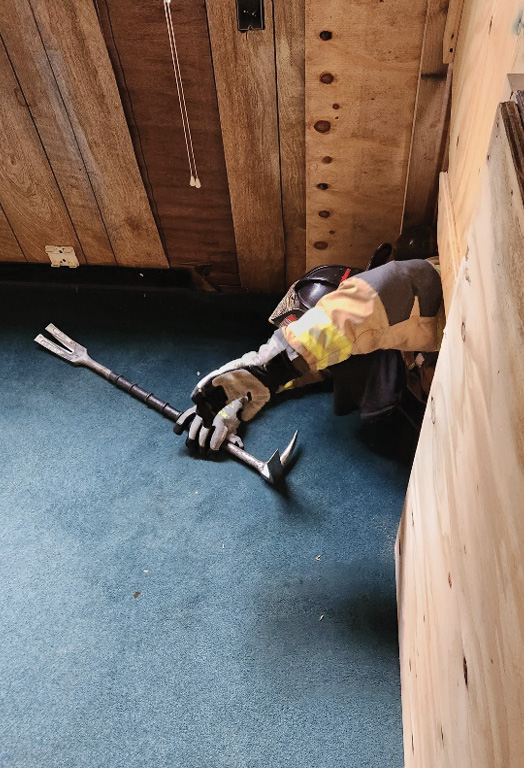



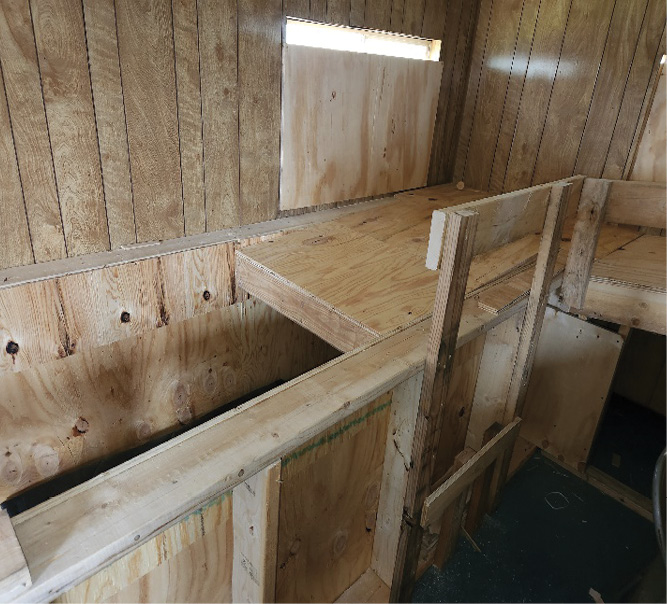
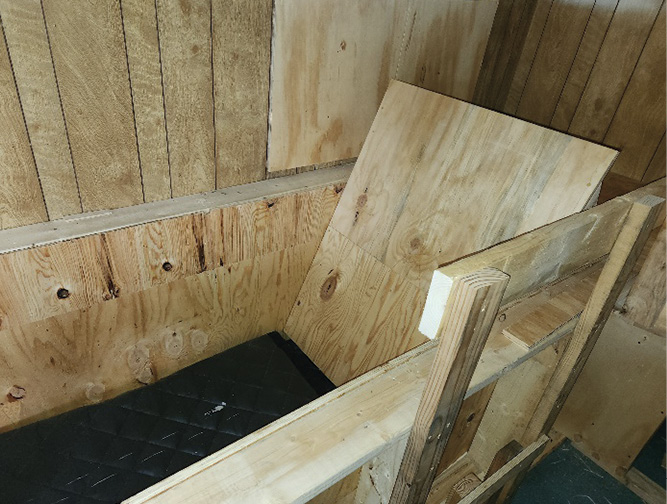
2.–8. Collapsible floors and Denver drill training props. The Denver drill can be vital to rapid intervention team (RIT) deployment and firefighter rescue. Simply mounting half-gate values on a wood frame and running rebar to make a web of bars is helpful for saw operations. Then you can add a diminishing clearance in a search maze or even a confined space prop. (Photos 2-8 by Frank Ricci.)
4. Contact your fire marshal’s office and local developers.
Is there a building that is either vacant or scheduled for demolition where you can conduct a live burn? If you can’t burn it, can you set up evolutions using theatrical smoke (with a smoke machine) for structural drills or skill stations such as roof operations (photo 9)?
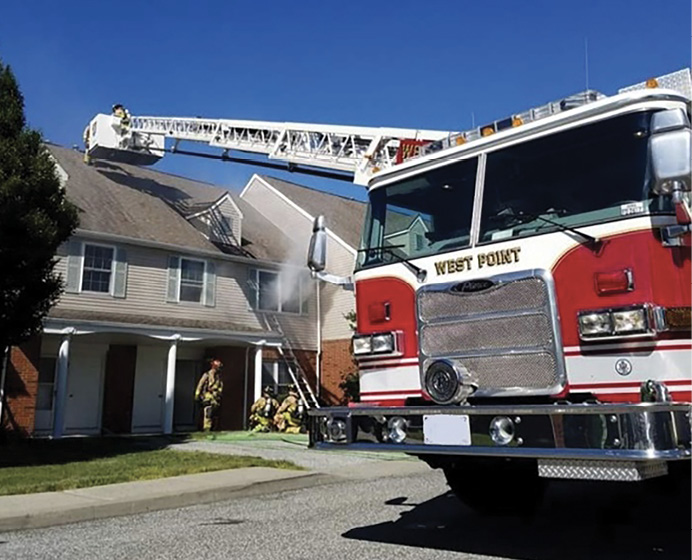
9. Firefighters train in a smoke-filled structural drill in a vacant and unoccupied residence. The smoke was produced with a smoke machine. (Photos 9-11 by Dave McGlynn.)
5. Work with neighboring departments.
Tapping into your resources through your network unlocks a multitude of opportunities. Ask your neighboring mutual-aid partners if they have an acquired structure in their first due. If a mutual-aid district or response area has the resources to acquire an unoccupied structure, you can set up a joint training session. This approach offers your team the opportunity to train in a real building, and it can garner much-needed cohesion and mutual trust between mutual-aid partners (photo 10).
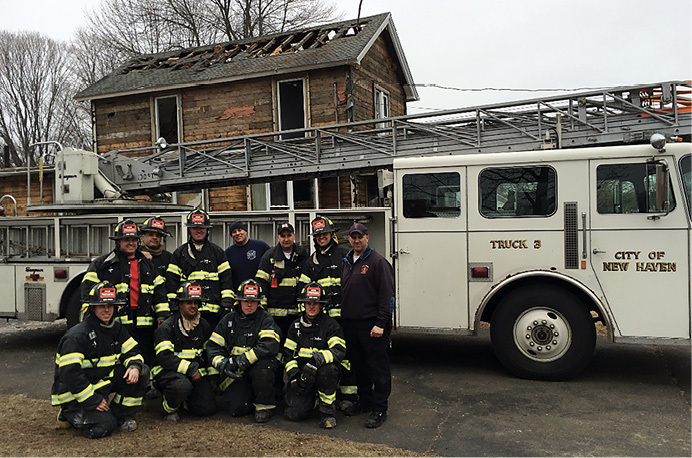
10. When the department had trouble getting a vacant structure in the city, it reached out to P.J. Norwood, East Haven training chief and Fire Engineering board member. Norwood had a vacant structure and put together joint training between East Haven and New Haven.
6. Get out and look for stuff!
While conducting area familiarization or preplans, take some time and drive around your response area to see if someone has an old office trailer (photo 11). If it’s about to be “retired,” ask if it would be OK for you to haul it to the fire department. If it’s in reasonable condition, you can convert it to a training building using the props constructed in step 3.

11. Firefighters can be innovative and ensure the trailer matches their desired training expectations. For example, they can convert the trailer if they want a search drill.
7. Negotiate for career and volunteer departments.
Look to your networking group and other departments. Negotiate trading instructors based on their strengths. For career departments, union leadership should be flexible in allowing comp time as an option for time spent training.
Why Is This Important?
When firefighters create their own props, their contributions give them ownership. The team cohesion that comes out of that experience may lead your department to love training and no longer see it as a chore.
Training is a critical requirement in fire departments, and departments need funding to make it happen. In the current economic climate, fire departments often have to get creative. So many of the steps above involve networking, and networking always starts with a handshake and a smile. 
REFERENCE
“New Haven Firefighters Train for High-Angle & Confined Spaces,” New Haven (CT) Fire Department. bit.ly/42IJNUV.
DAVE McGLYNN is an instructor at FDIC International, a contributor to Fire Engineering, a member of the FDIC and Fire Engineering Advisory Board, and the host of the Fire Engineering podcast The Training Officer. McGlynn is also the author of The Training Officer: Do You Have What It Takes?
FRANK RICCI is an instructor at FDIC International, a contributor to Fire Engineering, a member of the FDIC and Fire Engineering Advisory Board, and the cohost of the Fire Engineering podcast Politics and Tactics. Ricci is the author of Command Presence: Increase Your Influence (Fire Engineering).
Dave McGlynn will present “Do You Have What It Takes to Be a Training Officer?” at FDIC International in Indianapolis, Indiana, on Wednesday, April 17, 2024, 3:30 p.m.-5:15 p.m.
Frank Ricci will present “The Tactics of Leadership” at FDIC International in Indianapolis, Indiana, on Tuesday, April 16, 2024, 1:30 p.m.-5:30 p.m., and “Aggressive Search: It’s Still About the Victim,” on Wednesday, April 17, 2024, 1:30 p.m.-3:15 p.m.

